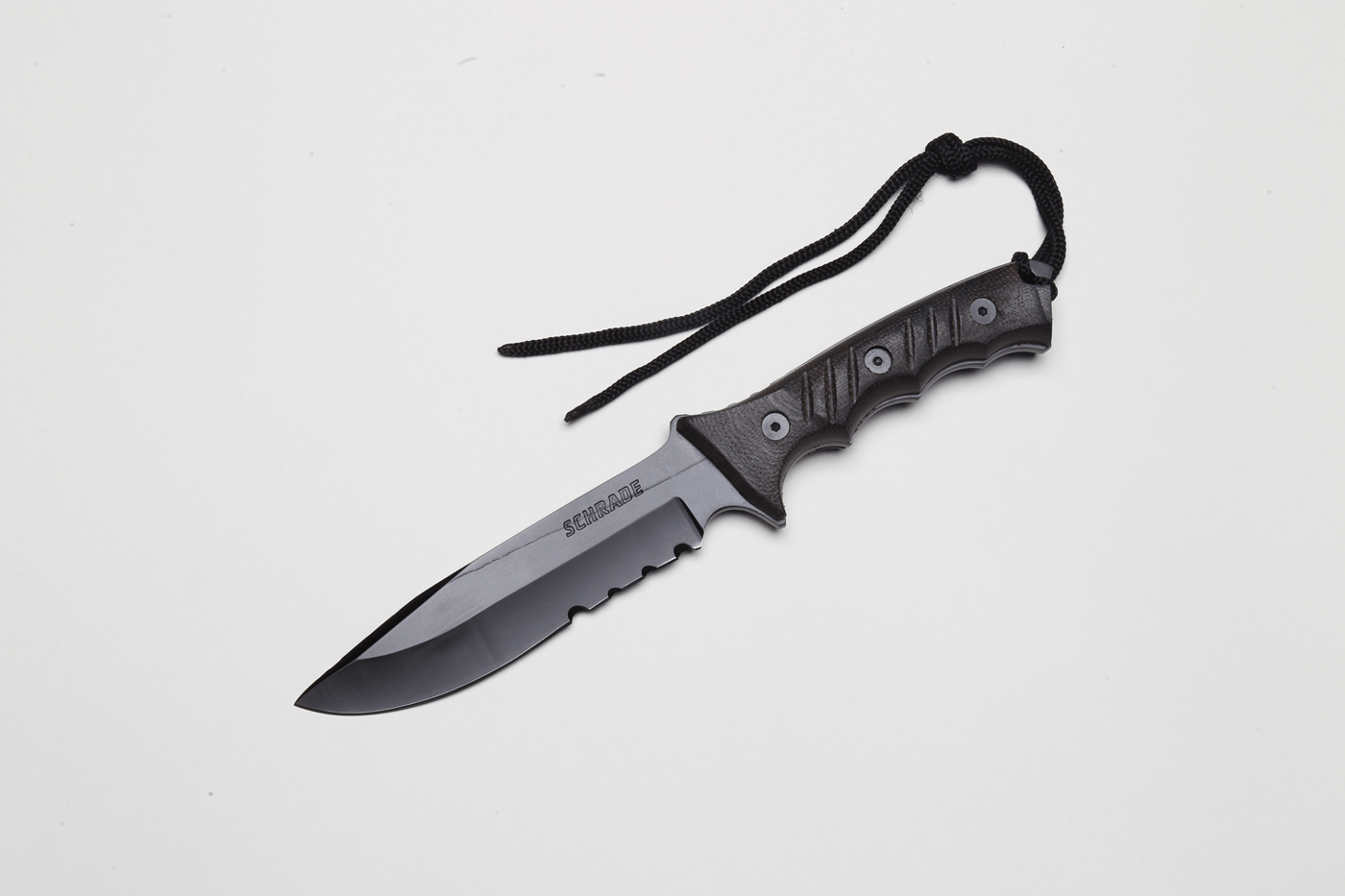There are many that suppose the single piece of gear one would need to successfully survive in an away-from-civilization environment for any length of time is a good fixed-blade knife. Its adaptability and versatility can withstand the rigors of daily life in the wilderness, as it can be anything from a weapon to a can opener and everything in between. There is much said about cost versus quality in the outdoor industries, and although survival can’t be entered as a budget line item, economical blades usually fit the mold of “you get what you pay for.” In this case, however, the SCHF3 breaks that mold.
The Blade
As a full-tang knife wrapped in Micarta grips, the SCHF3 exudes durability. Also, this knife is made of 440C high carbon stainless steel. This is a good steel for survival knives because it is very hard and holds an edge well. It is important, especially in a survival situation, to not have to sharpen your knife frequently. The SCHF3 retains its edge and maintains its cutting strength.


Schrade makes several other survival blades with serrated or flat edges, but the SCHF3 is the only one that combines a flat and serrated edge on the same blade. That flat edge is perfect for slicing through rope and twine, while the serrated knife lets you saw through small trees and heftier branches. The SCHF3 is a drop point blade which lends to a very tactical appearance.


The large sweep of the blade makes the SCHF3 ideal at chopping, while the drop point gives the knife skills at carving, small detail tasks, and for piercing. This knife could be used for defensive purposes or lashed to a stick as a spear.
The thick blade makes up most of its 1.37 pounds, which is a nice balance for a survival knife. Any lighter and the knife loses a lot of its momentum in the swing but any heavier and the operator might become fatigued quicker by its bulk.
The Handle
Micarta is a woven resin laminate created with high pressure. It is a go-to handle material because of its durability and performance in all weather conditions. It doesn’t slip when wet and won’t deteriorate in the elements. The grips are attached via three Allen screws for security but also for ease of changing if need be. The deep finger grooves and large choil add a sense of security when gripping this knife. It just has a solid feel, and doubly so when the attached lanyard is used.


The Sheath
This knife includes a heavy nylon sheath with a plastic insert, reinforced with steel grommets. The sheath can be used on the left or right side and has a two lanyards (one for the thigh and one to attach to elsewhere). The sheath has a small external pocket you can use to hold a sharpener or small flint for fire starting, and there is a plastic insert to keep the knife from piercing the sheath. The hook and loop retention clasp doesn’t get in the way when you are trying to draw the blade, and there are multiple ways to attach this knife to yourself or your gear with the four loops of webbing on the reverse.




Blade Length: 6.4 inches
Handle Length: 5.6 inches
Overall Length: 12.0 inches
Weight: 1.37 pounds
MSRP: $74.29
Editor’s note: A version of this article first appeared in the June 2015 print issue of American Survival Guide.


